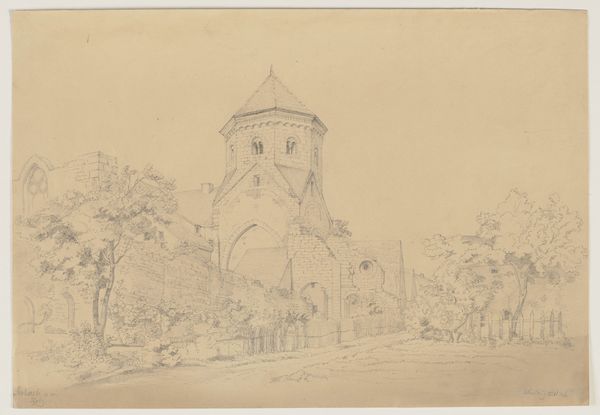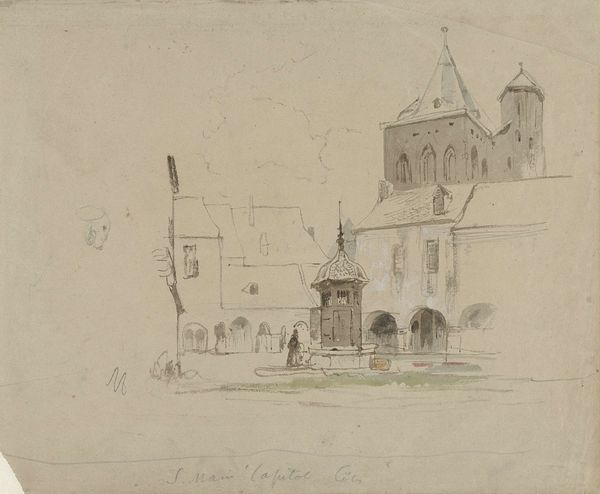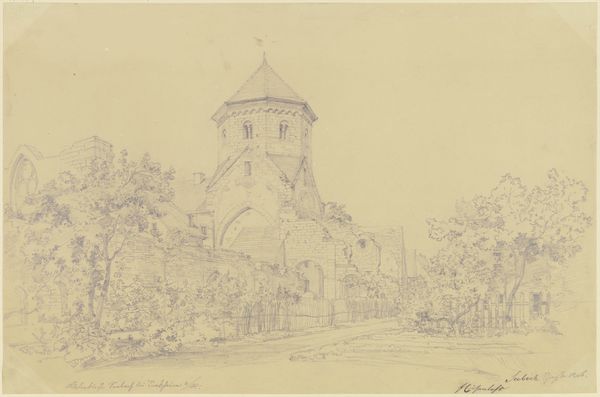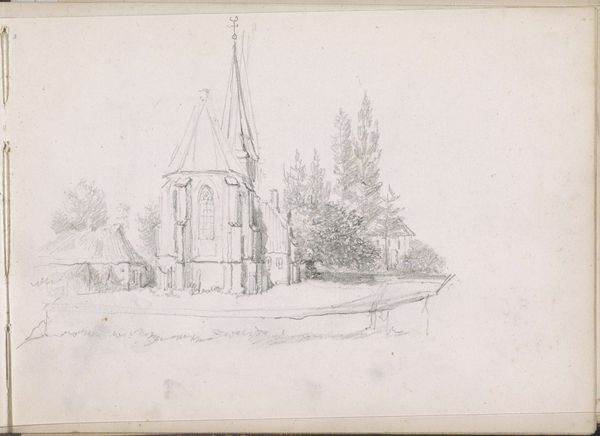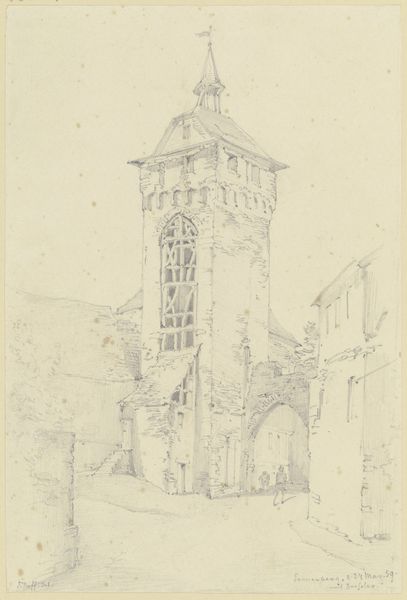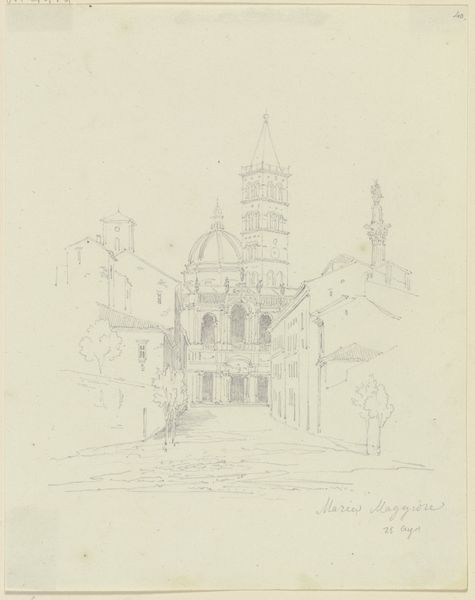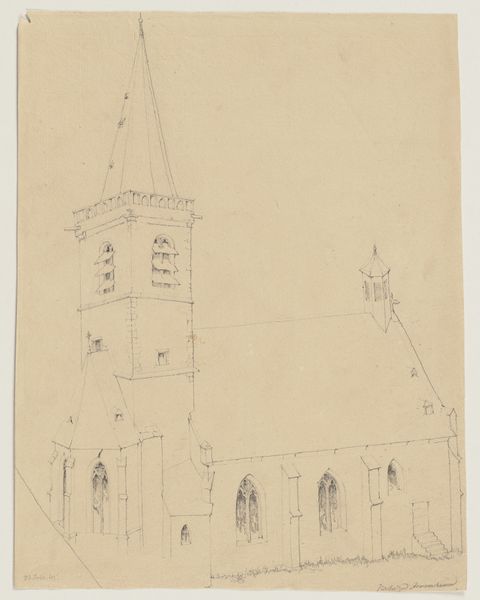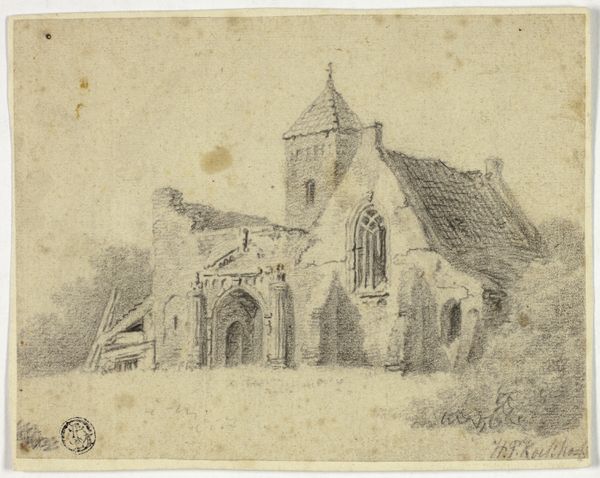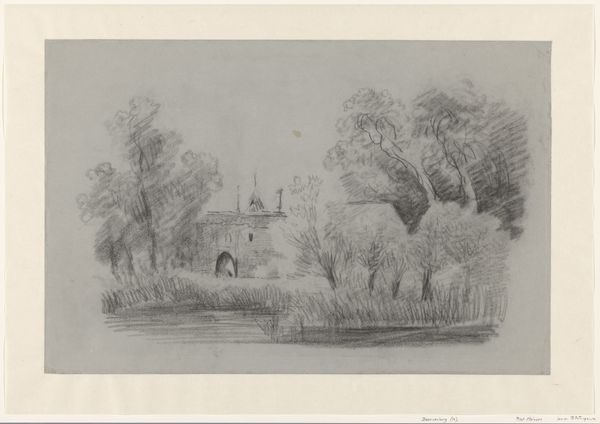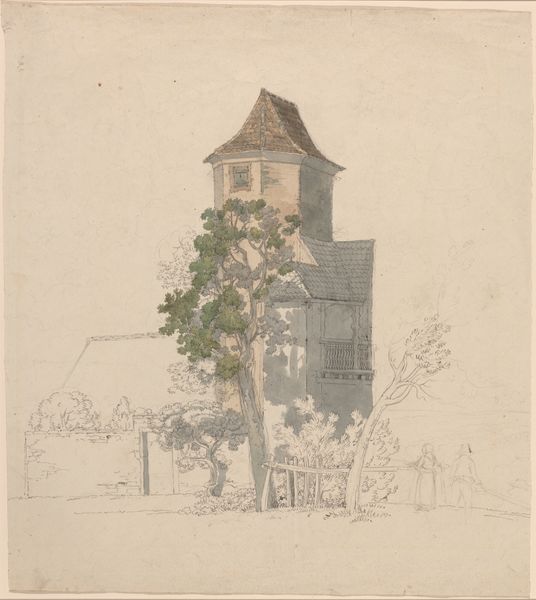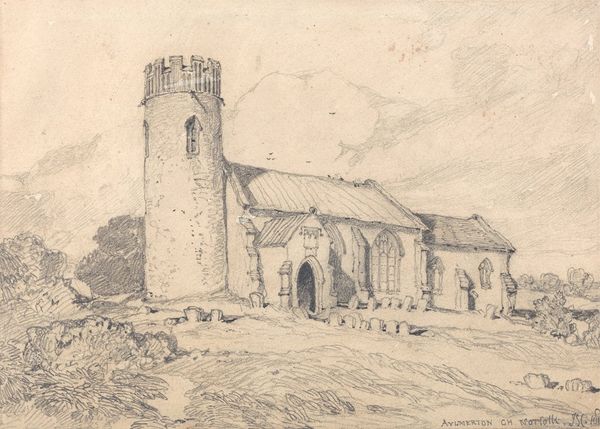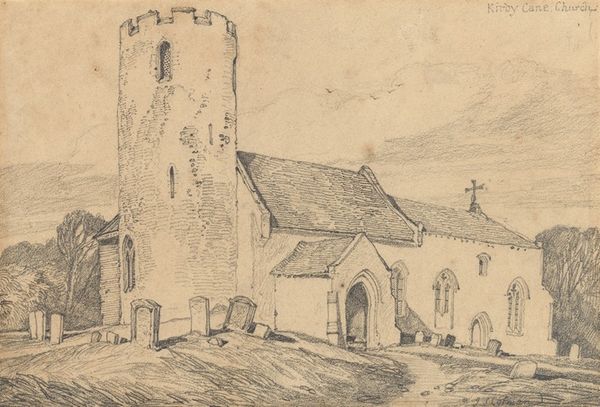
drawing, paper, pencil, graphite
#
drawing
#
pencil sketch
#
landscape
#
paper
#
pencil
#
graphite
#
cityscape
Dimensions: 249 × 233 mm
Copyright: Public Domain
Curator: Today we're looking at a work titled "English Country Church," a graphite and pencil drawing on paper. It is held in the Art Institute of Chicago and attributed to Edward Blore. What's your first reaction to it? Editor: Ethereal. Almost a ghost of a church, captured in a hesitant, almost trembling hand. There's a fragility to the lines. What materials was he using precisely? Curator: Mostly graphite and some pencil on paper, very unassuming materials for such a grand subject. Makes you wonder, doesn't it, about the economics of architectural visualization then, perhaps? Blore was a rather established architect in his time, would this have been just one small element? Editor: Precisely my thought. Was this a preparatory sketch? A doodle almost, yet rendered with such care. How interesting that the church is prominent, yet also somehow recessive due to the nature of the line. Was Blore simply experimenting with scale and composition? This really pushes one to see it not just as 'a church' but a material investigation into form and the very means of representation. The landscape style is prevalent and common; perhaps it allowed freedom to push further in other means. Curator: That reading makes complete sense. The wispy trees seem to echo the steeple's own tentative reach toward the sky. There is also an undeniable feeling of nostalgia. Looking at those very subtle variations in line weight makes me think that Blore might have been more deeply affected by the church's symbolism. Maybe he simply sought to imbue this humble house of worship with something more. Editor: Indeed, a yearning seems embedded into the materiality itself, wouldn't you agree? The physical act of putting pencil to paper becomes, in essence, a kind of longing—not just for the church as it stood but perhaps also for an idealized version of Englishness. Curator: I suppose you are right: the simplicity of the medium emphasizes that very English sentimentality toward nature. Maybe the impermanence of graphite speaks to a broader truth. And thinking about Blore, there are strong suggestions from his work, overall, about the beauty he sought to see, a spiritual reflection cast with tender strokes of pencil. Editor: So, despite its modest materials and appearance, the piece has opened up this unexpectedly deep conversation around architectural process, materials, representation and their implicit societal implications and dreams. Not bad for a little church drawing!
Comments
No comments
Be the first to comment and join the conversation on the ultimate creative platform.
